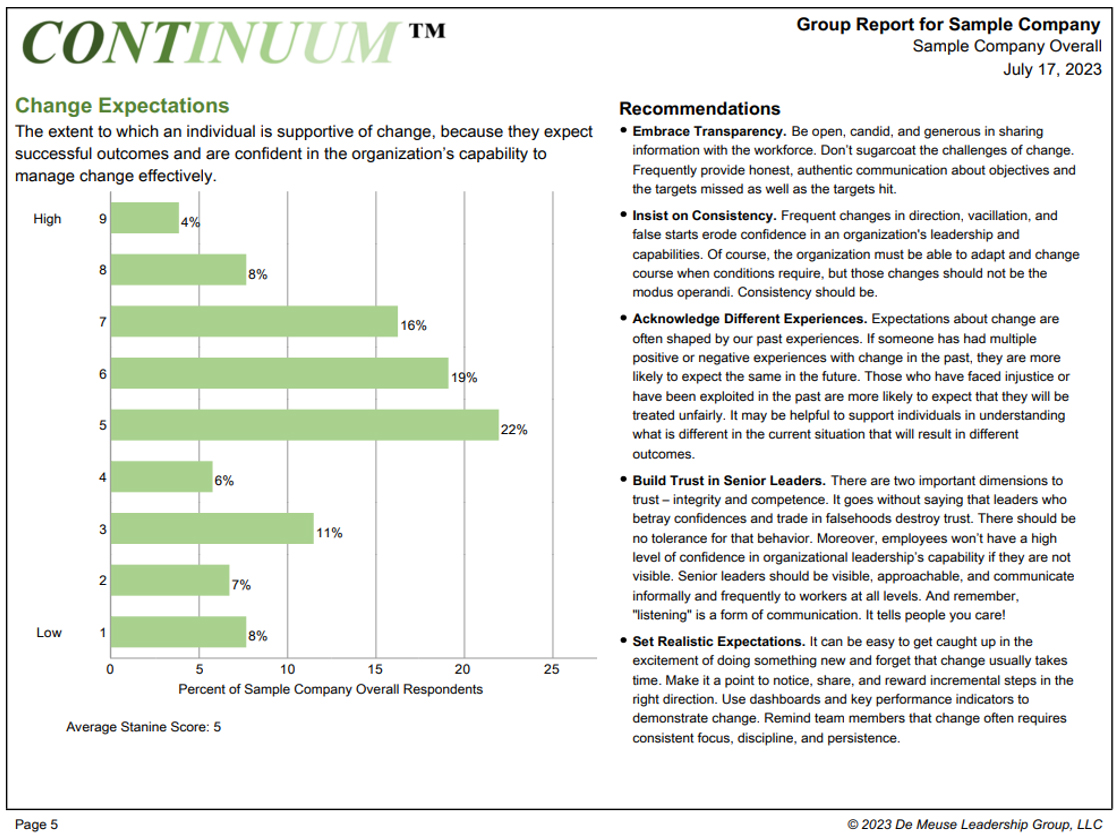Feedback Reports
When looking at a large group of individuals, CONTINUUM scores – like most individual differences – fall into a bell-shaped curve, known as a normal distribution. Most people fall into the moderate zone, with fewer people having either extremely high or low change scores. It’s important to keep in mind that neither high nor low scores are inherently “good” or “bad.” Indeed, different reactions by employees can be advantageous for an organization. For example, those who are more cautious can identify risks that others may miss. It is critical to recognize that “one-size-fits-all” approaches to change management are less effective than those tailored to meet individuals and teams where they are.


The CONTINUUM Assessment provides two reports: (a) the Individual Feedback Report and (b) the Managerial Group Report.
The Individual Feedback Report presents how a specific employee is likely to perceive and respond to organizational changes. A report presents three distinct types of information. First, it identifies a spectrum of behaviors on how an employee will react to organizational changes, ranging from being cautious, tolerant, amenable, supportive, or take an active role promoting change. Second, scores are provided on five unique facets of how individuals respond to changes (e.g., emotionally, their confidence to handle the change). And finally, the report provides specific guidance on how an individual can deal with changes more effectively. The objective of the Individual Feedback Report is to enhance the employee’s self-awareness of how they generally perceive and react to change, as well as provide team leaders diagnostic information on how to best “manage” change for their employees.
The Managerial Group Report presents the Overall Change Readiness Score for a team of individuals and identifies percentages of them that fall into the “cautious,” “tolerant,” “amenable,” “supporting,” and “promoting” category (see below left). In addition, the percentage of employees is given for each of the five facets of change such as change emotions, change preferences, etc (see below right).


